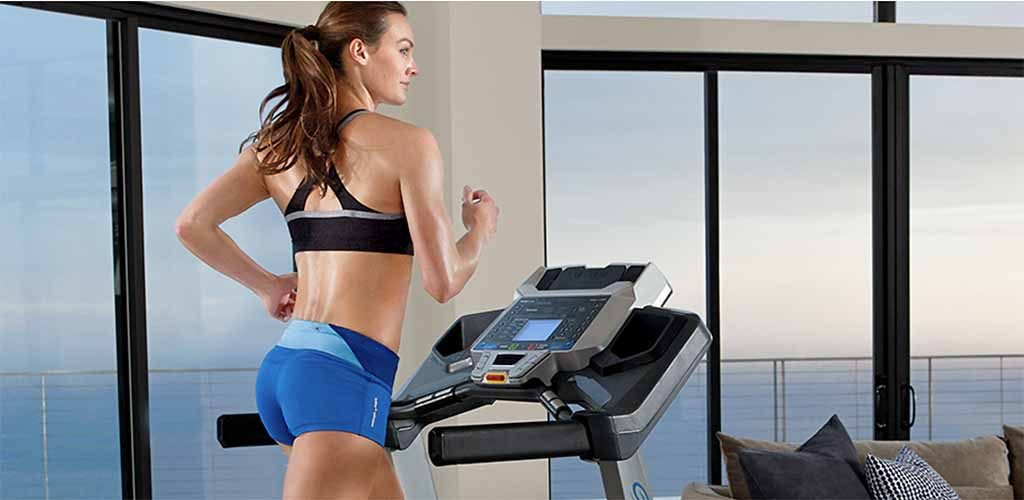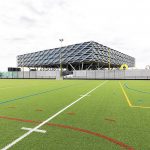By Eric Smith
<span style="color: #a3a3a3;">On Monday’s fourth-quarter earnings conference call, Nautilus Inc. CEO Jim Barr admitted that the Vancouver, WA-based fitness manufacturer got a late start bringing connected equipment to the marketplace.
What’s more, he told analysts while discussing the company’s Q4 results, Nautilus has a difficult hill to climb. Not only is Peloton Interactive Inc. a fierce competitor, but it’s also a foe with different goals than most publicly traded companies.
Peloton, which only held its IPO last fall, has been operating at a loss and projects to do so until 2023, when it finally expects to turn a profit. Despite Nautilus’ best efforts, it’s hard to keep pace with a company that measures success in such a fundamentally different way.
“We missed early connected-fitness trends and despite recent acceleration, are continuing to catch up,” Barr said. “We are facing strong competition, some of which do not seem to have a profit motive at least in the short run. Therefore, it is not reasonable to expect that our turnaround and full transformation is going to be a short-term exercise.”
Despite being late to join the connected-fitness category, Nautilus has shifted into high gear and is spinning furiously to gain ground on leaders like Peloton, Echelon and others, Barr said. That includes some new offerings in its product portfolio and the launch of Nautilus’ digital platform under the JRNY brand.
The company has newfound energy centered on a comprehensive business transformation as well as the appointment of Barr as CEO in late July. His arrival came about five months after the resignation of Nautilus’ previous CEO, Bruce Cazenave, and a steady stream of slumping sales and sagging profits.
“In my first few months here, the team and I have identified key issues, diagnosed root causes, put in place short-term actions, focused on execution in the fitness season, and delivered sequential improvements at the most important time of the year,” Barr said.
So far, so good on the company’s efforts to start reinventing itself in light of such trends as connected fitness and such competitors as Peloton.
“On both our products and in our go-to-market methods, we are becoming a more digital version of our former selves,” Barr said. “We have a talented and evolving team and a culture that is strong, resilient and not resistant to change. With technology and connectedness, we have more ways to deliver on our noble mission.”
<span style="color: #a3a3a3;">Nautilus made some important strides while pursuing that “noble mission” in the fourth quarter, the first full quarter with Barr at the helm.
Nautilus reported earnings per share for the fourth quarter of 12 cents, easily topping Wall Street’s estimates by 26 cents. Revenue of $104.2 million was down 9.7 percent compared to the year-ago quarter, but it topped expectations by $4.4 million.
“In the fourth quarter, we achieved sequential improvements in important areas, which we believe are reflective of disciplined execution and the initial strategic initiatives we began to implement during the second half of 2019,” Barr said. “Even though we are encouraged by these short-term results, we must be realistic that we still face considerable challenges. We are fighting to reverse a multiyear revenue and profitability decline that culminated with losing more than 20 percent of our revenue base in 2019 driven largely by the decline in the Max line.”
In the company’s direct segment, net sales were $35.9 million, down 28.1 percent from $49.9 million. Increased sales of Bowflex bikes and Max Total were more than offset by lower Max Trainer product sales.
Gross margin in the direct segment was 49.9 percent, down from 58.7 percent, driven by unfavorable product mix and unfavorable overhead absorption related to the decrease in sales, the company said.
Nautilus reported an operating loss of $5 million in the direct segment, up from an operating loss of $3.8 million in the year-ago quarter due primarily to reflected lower net sales and lower gross margin rates partially offset by reductions in sales and marketing expenses.
The company did optimize its fitness-season advertising spend and focused on higher-returning media, which resulted in a 42.7 percent reduction in advertising expenses.
Said Barr, “Among the multiple causes of direct’s multiyear decline, which accelerated in 2018 and 2019, that we have diagnosed and begun to address: one, losing track of customers’ evolving purchase journey and media consumption habits; two, repeating a similar unsuccessful media mix strategy for several years; three, failing to introduce connected fitness and technology to our products rapidly enough; four, not keeping up with modern marketing techniques; and five, gaps in leadership. We expect to make progress on these and other fronts to revitalize the channel. However, it is unclear when this channel will return to profitable growth.”
<span style="color: #a3a3a3;">Nautilus notched more favorable results in its retail segment. The company reported net sales of $67.5 million, a 4.8 percent increase from $64.4 million in Q4 2018. Higher sales were driven primarily by SelectTech weights and Schwinn IC bikes as well as third-quarter 2019 shipment delays that were recognized in the fourth quarter of 2019.
Retail gross margin was 28.8 percent, down from 31.7 percent, driven primarily by unfavorable sales mix and higher tariffs. And the segment’s operating income was $12.2 million, up 8.1 percent from $11.3 million. Lower gross margin dollars were more than offset by more efficient sales and marketing expenses, as well as reduced research and development costs.
Barr closed his remarks by saying the company is laser-focused on improving its direct segment and then outlined some of the moves Nautilus has made in recent months, from the heightened emphasis on connected to fitness to bolstering its leadership team.
All told, those actions have the company bullish on the path forward. Although Nautilus didn’t release guidance due to the timing of the fourth quarter 2019 release and the “early stages of its business transformation,” it did provide the following commentary: “The company expects EBITDA from continuing operations to be a loss in the range of $4 million to $1 million. Capital expenditures for 2020 are anticipated to be in the range of $8 million to $10 million.”
“We are pleased with our change in trajectory and short-term results, our strengthened balance sheet, further acceleration of connected fitness and improvements in the team,” Barr said in closing. “We continue to have much work to do but I am pleased and excited that we have begun to move forward.”
Photo courtesy Nautilus
















